
When had we last watched the sunrise?
© Joyce McGreevy
What Does Nature Need Us to Notice?
Have you noticed it? While life in self-quarantine has restricted our movements, it has also unleashed our senses. As the range of our territory has contracted, our attention to the environment has enlarged.
We’ve had to slow down to the speed at which a flower grows, and now, something has begun to blossom. In moment by “oh, I see” moment: we’re regaining our instinct for the awe of nature.

In Ireland, a moment of attention blossomed into awe.
© Joyce McGreevy
Who We Were
How dramatically can cultural attitudes toward nature shift? Consider this. Shortly before lockdown went global, researchers published a report that highlighted an overwhelming lack of connection between people and the natural world.
The report is British, but surely reflects many of us circa 2020 “BC”—Before COVID-19. For example, of the children questioned:

How would we re-frame our focus?
© Joyce McGreevy
• 90% rarely or never watched sunrises.
• 83% rarely or never smelled wildflowers.
• 77% rarely or never listened to birdsong.
Findings among adults weren’t much better:
• Around 57–79% rarely or never noticed sunrises, wildflowers, or birdsong.
• Likewise, few adults or children celebrated natural events, such as the longest day of the year, autumn harvest, and so on.
• Only 25–33% watched clouds, or stopped to appreciate the stars or the moon in the sky.
How We Were Changed
Nature certainly has our attention now. For evidence of this, look no further than our recent personal communications.
Social media pages once dominated by selfies and humblebrags are blooming with hollyhocks and supermoons. Brash videos give way to whispered narratives as wild creatures amble down driverless roads at rush hour. Snarky memes yield to quotes from nature poets.
Wherever we call home—urban, suburban, or rural—our online connections are trending toward awe in nature.

What we had forgotten, nature reasserted.
© Joyce McGreevy
One day I receive a text message from a relative who lives in a California suburb. Usually we’re rushed. Tapping out terse logistics even as we plan family gatherings. Ending messages with “xo” to cover all that we never say. But today, he observes:
“. . . Just by being home most of the time I have seen things I probably wouldn’t have otherwise. A bright yellow bird. A field mouse that I only noticed because I could see the flowers move . . . a lizard with feet like no other lizard in this environment . . . Silver linings, indeed. What would I notice if I wasn’t constantly doing so much?”

What emerged was always there, waiting for us to see.
© Joyce McGreevy
What Difference Does Noticing Make?
Research shows that “noticing nature” and “nature connectedness” are strongly linked to practicing conservation. According to the British study, conducted by the University of Derby and the National Trust, the influence of these two factors is far greater than even the influence of time spent outdoors or knowledge and study of the environment.
As for one’s level of nature connectedness, a study at Ohio’s Oberlin College says it depends on three elements:
- How we think about nature. Do we see ourselves as sharing the great tree of life, or as positioned separately atop a pyramid of life?
- How we relate to nature. Do we consider nature as part of us, or as apart from us?
- How we feel about nature. Do we experience a sense of wonder, concern, calm, curiosity, gratitude, reverence, or other such responses to nature?

We relearned patience, and the importance of presence.
© Joyce McGreevy
Noticing Details
Suddenly, we have time to ask ourselves such questions. We may even be discovering that we’ve always had time. Time to wriggle fingers in loamy soil, to take that morning walk, to notice the violet underside of a rain cloud. Time to hang laundry on a clothesline, trading the whir of machinery for the chirp of a meadowlark. Time to notice the movement of a field mouse among flowers.

The small details became visible again.
© Joyce McGreevy
We’re remembering how one living thing connects to another, and it’s prompting us to weigh costs and consequences. If I choose this instead of that, who and what are affected? What’s harmful, what’s helpful?
We’re revisiting priorities. What do I want my time to grow into? Do I really need all those items that go from store to storage?
We’re realizing we can only buy so much, wear so much, eat so much, do so much. Oh, I see: We’re re-encountering what truly sustains us.

We remembered what mattered to us.
© Joyce McGreevy
Putting Ourselves on Notice
Meanwhile, the call of our old lives is echoing. After lockdown, the moon will still be passing over us. Will we look up? After lockdown, the song of the smallest bird will still be richer than the loudest “tweet” online. Will we hear it? After lockdown, the sunrise will still illuminate Earth, revealing both what’s wonderful and what’s wounded. Will we attend to it?
How will our cultural attitudes toward nature shift? What notice will we take of our environment when the old distractions come clamoring? What, then, will we make of our rediscovered awe of nature? A pleasant but fading memory or an attentive new journey?

When is the next sunset you will notice?
© Joyce McGreevy
To see more of this area, visit @BallyshaneStays on Instagram.
Download “Noticing Nature,” the report, here.
Comment on the post below, or inspire insight with your own OIC Moment here.

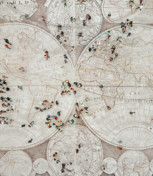
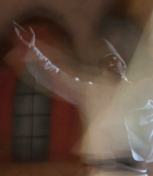

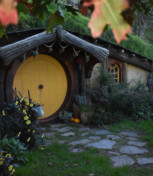

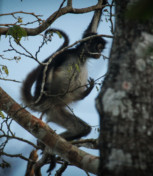

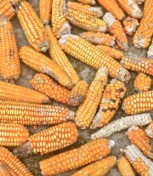
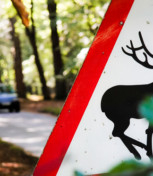
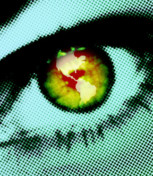


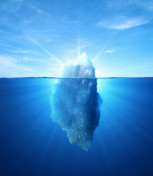
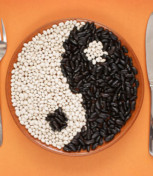






So enjoying the photos you have shown us. Have personally found so much I never noticed before since being cocooned for a number of weeks. Am elderly with numerous ailments but have made a habit of walking round our garden once a day & have found so much to enjoy! Apple blossoms, a tree full of the beginnings of a deluge of juicy plums, apples, pears & a multitude of Dandelion which our pet rabbit Monty adores. Am so grateful for the opportunity I have of sharing in this beauty.
Dear Yvonne, What a thoughtful and evocative comment! Thank you for painting such a vivid picture of your lovely garden with its orchard, wildflowers, and of course the Honorable Rabbbit-in-Residence. Reading about Monty brought back happy memories of a little rabbit belonging to an Irish relative of mine. The white rabbit was great pals with our black cat, and each day when the cat fed her litter, the rabbit would curl up on the other side to encircle the tiny kittens in warmth and love. By the way, this morning I saw tiny ducklings in the pond with their mother, another hopeful sign. Stay safe and well, Yvonne. All the best, Joyce
Beautiful sights and insights–thank you! I’ve been delighted by images of nature recovering from manmade damage: cleaner air in Beijing, New Delhi, LA, London; goats chomping their way through towns in Wales, lions sleeping on the road in Africa, big cats walking down empty city streets. Makes me think a pandemic is a message from the planet.
Thank you for your kind words, Barbara, and for sharing those excellent examples of nature recovering from human-made damage. You called to mind one of my favorite quotations from Thoreau: “What’s the use of a fine house if you haven’t got a tolerable planet to put it on?” May we steward the one home we all have in common.
A very enjoyable article. How true it is. Will we, as you say, take time to appreciate nature and how it and we are bound together. There so many wonders to enjoy, large and small and they do do us good.
Beautifully said, Robert. Thank you for taking an “oh I see” moment to write and remind us of life’s everyday wonders. They do our hearts good indeed!
This is so true , so on point! I have realized, with this extra time at home, that I had forgotten my love of the garden. Seeing the newly sprouting larkspur seeds is absolutely delightful! The finch and chickadees are flitting about, tiny butterflies… it’s wonderful to see. Thanks Joyce, taking time to see the sunrise CAN change your perspective from gloom to glad! Mother Earth has always been there for us, and she’s so beautiful!!
Thank you, Erin, for sharing that lovely vignette of your garden–so evocative that this reader could almost feel the brush of a butterfly’s wings as it fluttered by. And you are so right, Mother Earth has always been there for us; when we are there for her, we are the happier for it.